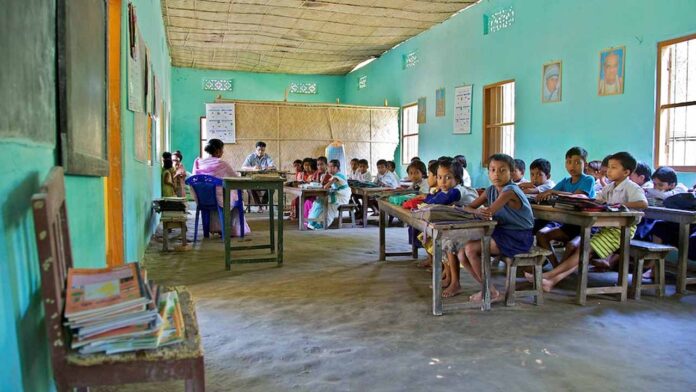Education Minister Ranoj Pegu has highlighted alarming dropout rates among students in Assam, which significantly exceed the national average. The primary causes, according to Pegu, are economic hardships and insufficient access to secondary schools. These issues have led to a concerning number of students leaving school before completing their education, a problem that the state government is now addressing with new initiatives.
Assam’s dropout rates reflect a broader crisis in the education sector, where economic challenges and inadequate infrastructure are major barriers to student retention. Many families in the state struggle with poverty, which makes it difficult for them to support their children’s education. The costs associated with schooling, including uniforms, books, and transportation, can be prohibitive for economically disadvantaged families. This financial strain often forces students to leave school to contribute to their family’s income or to fulfill other responsibilities at home.
The lack of secondary schools compounds this problem. In many areas of Assam, especially in rural and remote regions, there are not enough secondary schools to accommodate all students who complete primary education. This shortage forces students to travel long distances to attend school or, in some cases, they may have to forgo further education altogether. The geographical and logistical challenges of reaching secondary schools contribute significantly to the dropout rates.
To tackle these pressing issues, the Assam government has launched several initiatives aimed at improving educational access and reducing dropout rates. One of the key measures includes providing free education to students from economically disadvantaged backgrounds. This initiative aims to alleviate the financial burden on families and ensure that cost is not a barrier to education.
Additionally, the state government is working on expanding the network of secondary schools to make education more accessible. This expansion involves constructing new schools in underserved areas and upgrading existing facilities to accommodate more students. By increasing the availability of secondary education, the government hopes to reduce the travel burden on students and make it easier for them to continue their education.
These initiatives are part of a broader strategy to address the multifaceted challenges affecting education in Assam. By focusing on both economic support and infrastructural development, the government aims to create a more supportive environment for students and families. The goal is not only to keep students in school but also to improve overall educational outcomes and opportunities for the youth of Assam.
Despite these efforts, significant challenges remain. The effectiveness of these initiatives will depend on their implementation and the continued commitment of both government and community stakeholders. Ensuring that support reaches those who need it most and that new schools are built and maintained properly are crucial steps in addressing the dropout crisis.
The dropout rates in Assam also highlight the need for a more comprehensive approach to education that considers various socio-economic factors. Addressing poverty, improving school infrastructure, and enhancing educational programs are essential components of a strategy to ensure that all students have the opportunity to complete their education.
Assam’s high student dropout rates are a result of economic difficulties and a shortage of secondary schools. The state government, under the leadership of Education Minister Ranoj Pegu, is taking steps to address these issues through free education initiatives and expanding school infrastructure. While these measures represent a positive direction, ongoing efforts and commitment will be crucial in achieving long-term improvements in student retention and educational access. The challenge now lies in effectively implementing these initiatives and ensuring that they reach and benefit all students in need.




